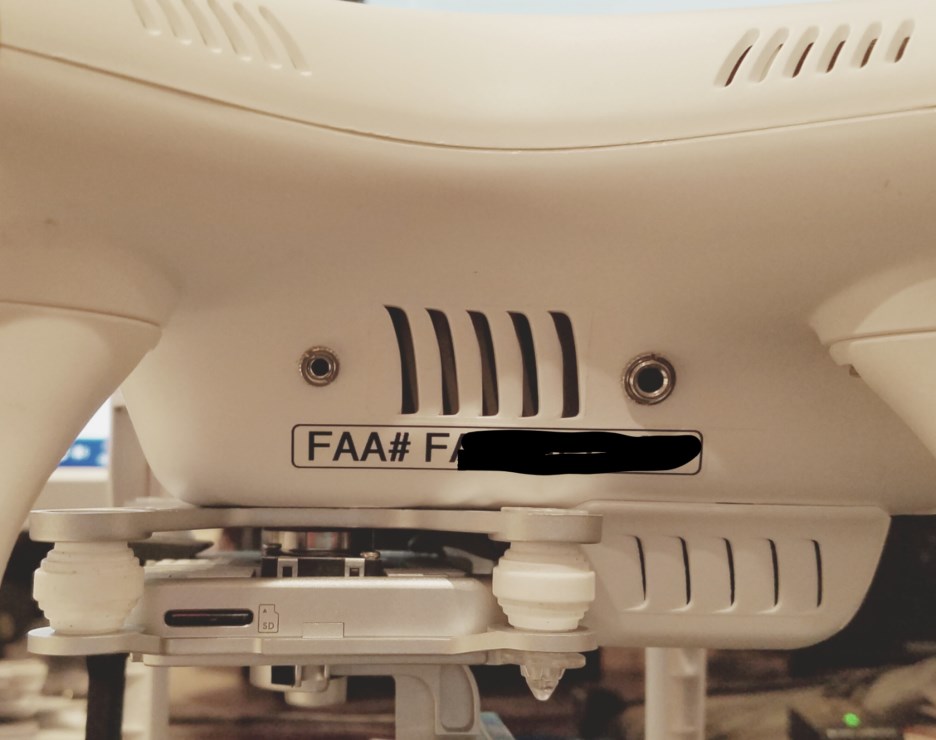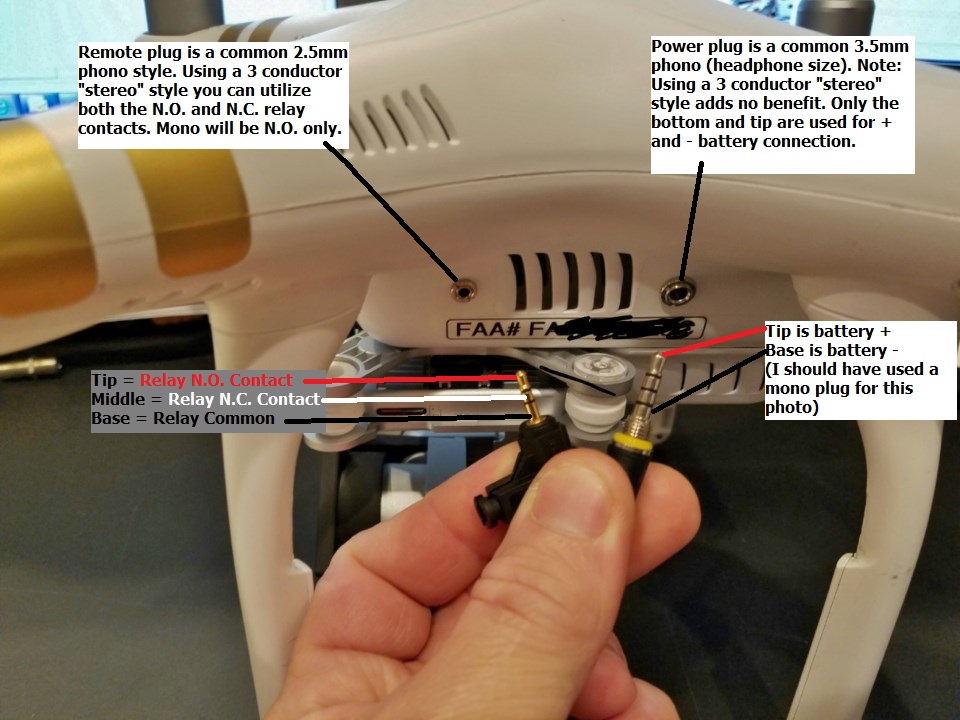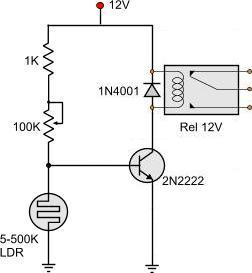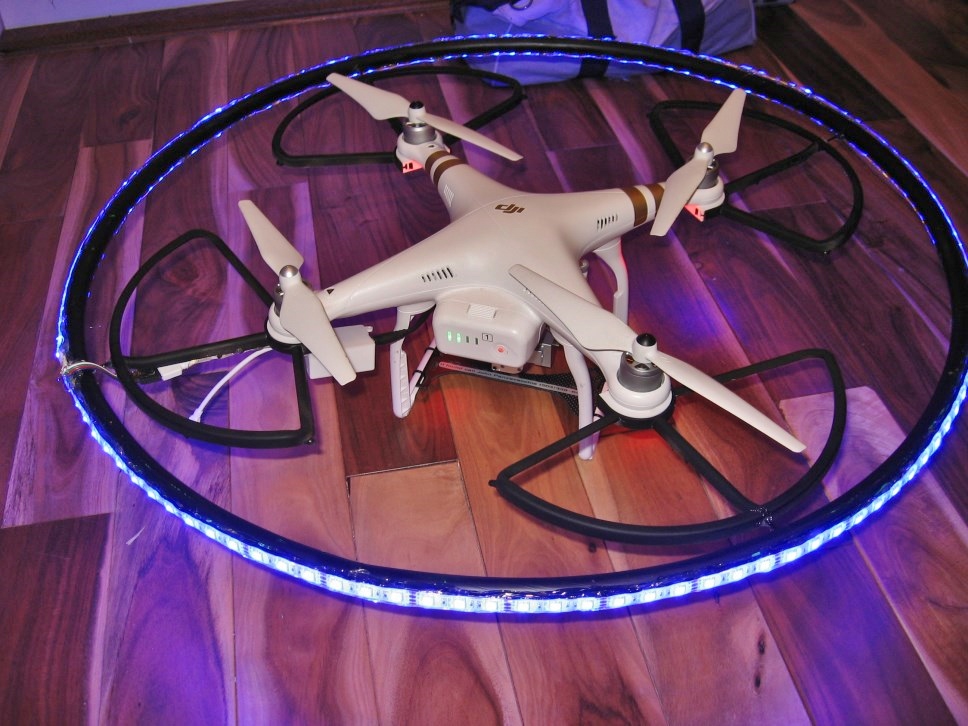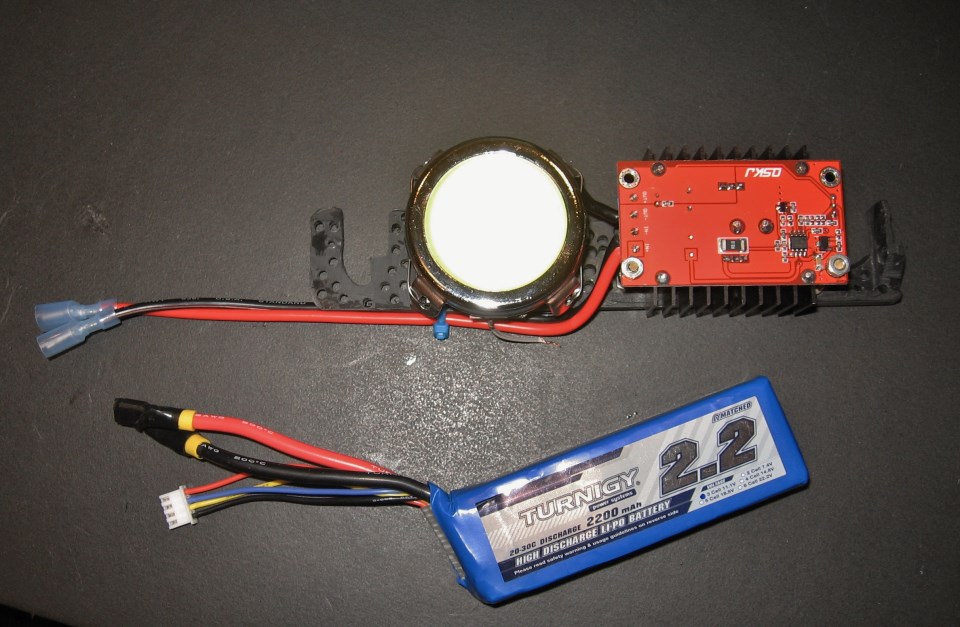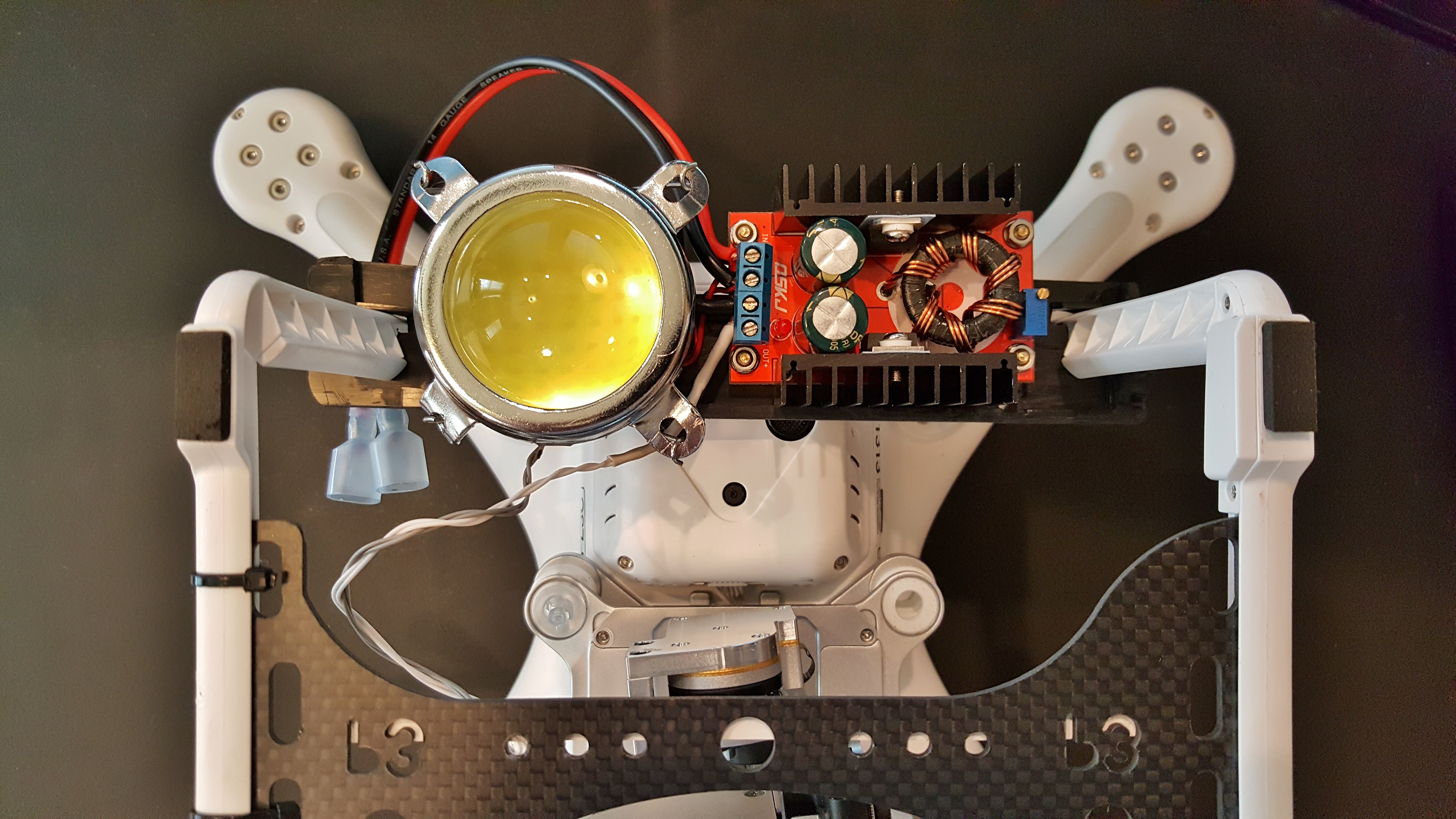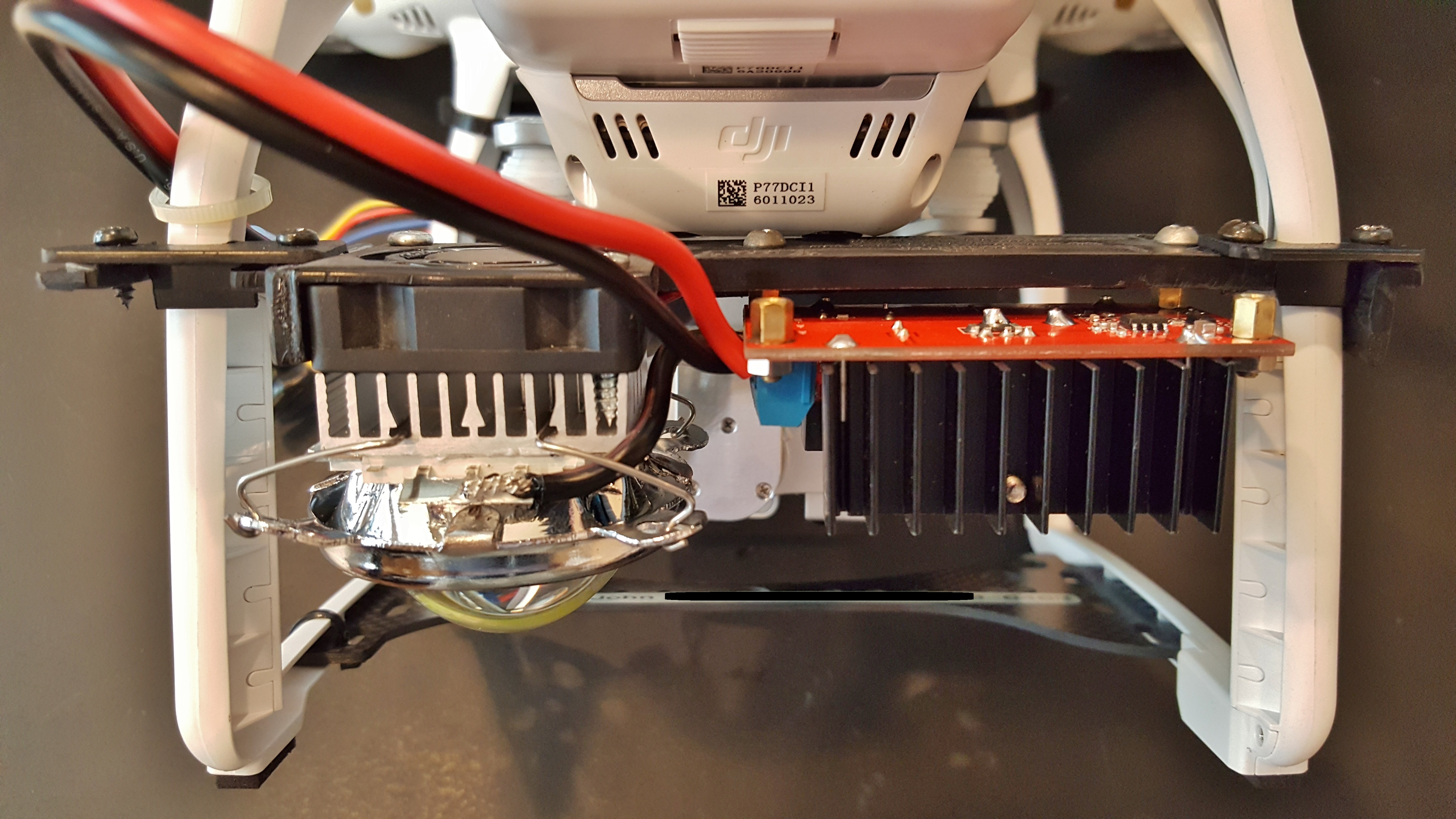I wanted a way to remotely turn on some lights that I made for my P3P. Unfortunately the Phantom has no extra channel capability so I needed to add a relay that can be triggered from the front LED's. Easy right? just hook up a relay coil to the front LED wires... wrong! The front LED power is not enough to power a relay so I have to make something based on what I saw someone else made to trigger a drop mechanism. The basic premise is that a LDR (light dependent resistor) drops its resistance when the front arm LED shines on it. That allows power to flow and "turn on" a transistor, that in turn finally powers the relay's coil. I made this so that it can all fit inside the P3 and I installed phono jacks to allow me to plug into the relay contacts and power tap off of the DJI battery. For the remote jack I used a 2.5mm phono jack and for the power plug it is a standard headphone size 3.5mm phono jack. I liked how the jacks could be mounted by just drilling 2 small homes and they are held in place with a metal ring nut. I also went ahead and added a bit of hot glue so they won't come loose anytime soon. I liked the phono jacks because they are so common that donor plugs are everywhere around my house. I won't be using much amperage from the DJI battery for the safety of my bird so I didn't really need a high amperage jack like you would use for an extra battery pack. This is just for low power items so you don't have to add extra weight of another battery. Even a little 9v square cell is kind of heavy. Overall I am pleased with how it came out. I tested it yesterday and it was too sensitive during the day. The ambient daylight shining up into the LED arm lens was enough to turn it on, even without the red LED on. The solution for this is to partially mask the LDR to make it less sensitive, or adjust the size of the bias resistor in the circuit, etc. I use this to trigger my lights at night so it works fine for my purposes for now. I labeled things in the photos so it should be pretty self explanatory. The relay jack has 3 wires so you can do "normally open" or normally closed based on the LED light being on or off. The power jack only has 2 wires so a stereo plug won't hurt anything but you only need the base and tip like a mono plug. I am posting this in case someone else wants to do something similar. Let me know of any improvements you make if you build one for your Phantom.
This is the basic circuit schematic
This was my first time using it last night. It works great!
Here is a short video of the light ring in action. I taped over the other stock LED lights so my drone was invisible until I turned on the UFO lights.
This is the basic circuit schematic
This was my first time using it last night. It works great!
Here is a short video of the light ring in action. I taped over the other stock LED lights so my drone was invisible until I turned on the UFO lights.
Last edited:




